Shaocheng Huang
Federated Learning over Wireless IoT Networks with Optimized Communication and Resources
Oct 22, 2021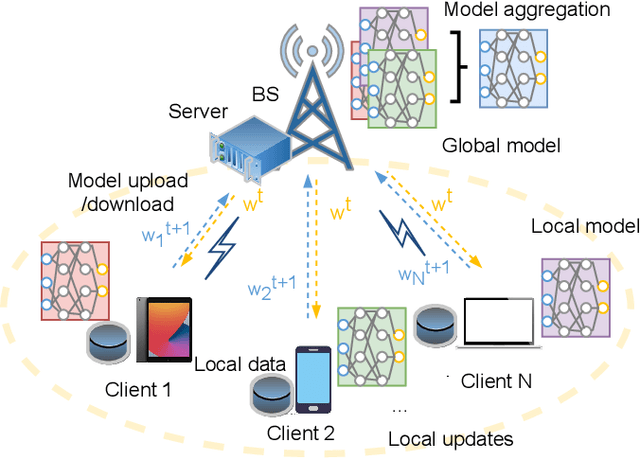
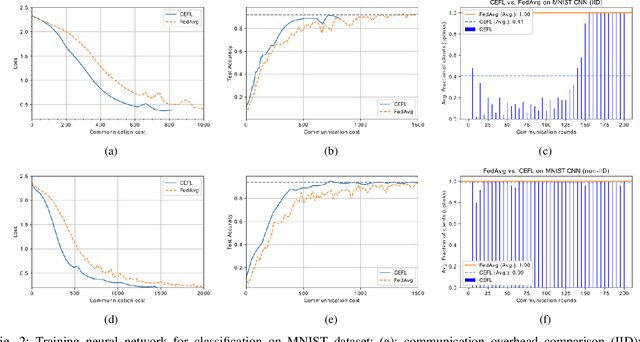


Abstract:To leverage massive distributed data and computation resources, machine learning in the network edge is considered to be a promising technique especially for large-scale model training. Federated learning (FL), as a paradigm of collaborative learning techniques, has obtained increasing research attention with the benefits of communication efficiency and improved data privacy. Due to the lossy communication channels and limited communication resources (e.g., bandwidth and power), it is of interest to investigate fast responding and accurate FL schemes over wireless systems. Hence, we investigate the problem of jointly optimized communication efficiency and resources for FL over wireless Internet of things (IoT) networks. To reduce complexity, we divide the overall optimization problem into two sub-problems, i.e., the client scheduling problem and the resource allocation problem. To reduce the communication costs for FL in wireless IoT networks, a new client scheduling policy is proposed by reusing stale local model parameters. To maximize successful information exchange over networks, a Lagrange multiplier method is first leveraged by decoupling variables including power variables, bandwidth variables and transmission indicators. Then a linear-search based power and bandwidth allocation method is developed. Given appropriate hyper-parameters, we show that the proposed communication-efficient federated learning (CEFL) framework converges at a strong linear rate. Through extensive experiments, it is revealed that the proposed CEFL framework substantially boosts both the communication efficiency and learning performance of both training loss and test accuracy for FL over wireless IoT networks compared to a basic FL approach with uniform resource allocation.
Learning Based Hybrid Beamforming for Millimeter Wave Multi-User MIMO Systems
Apr 27, 2020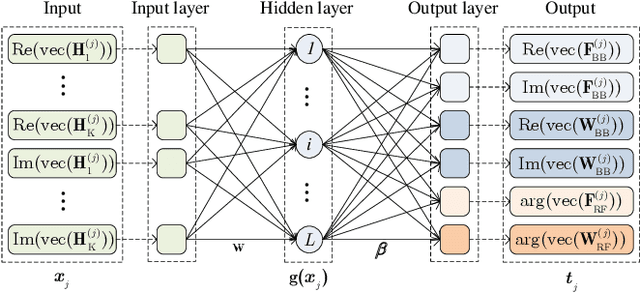


Abstract:Hybrid beamforming (HBF) design is a crucial stage in millimeter wave (mmWave) multi-user multi-input multi-output (MU-MIMO) systems. However, conventional HBF methods are still with high complexity and strongly rely on the quality of channel state information. We propose an extreme learning machine (ELM) framework to jointly optimize transmitting and receiving beamformers. Specifically, to provide accurate labels for training, we first propose an factional-programming and majorization-minimization based HBF method (FP-MM-HBF). Then, an ELM based HBF (ELM-HBF) framework is proposed to increase the robustness of beamformers. Both FP-MM-HBF and ELM-HBF can provide higher system sum-rate compared with existing methods. Moreover, ELM-HBF cannot only provide robust HBF performance, but also consume very short computation time.
Learning Based Hybrid Beamforming Design for Full-Duplex Millimeter Wave Systems
Apr 16, 2020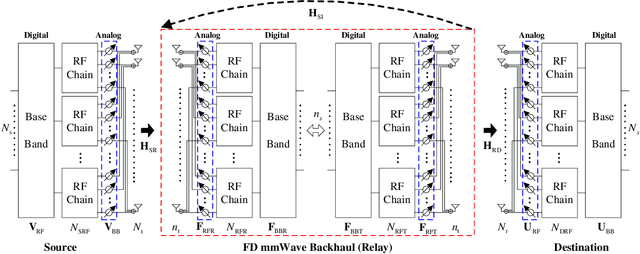
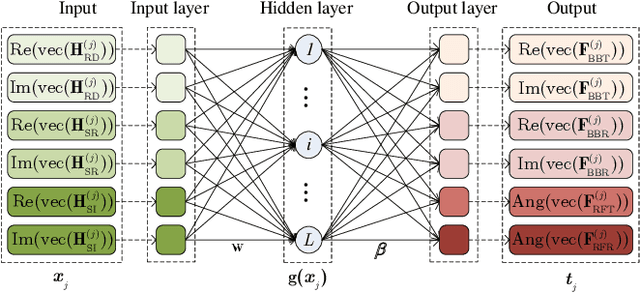
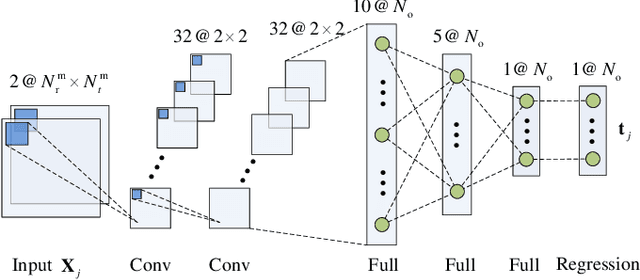

Abstract:Millimeter Wave (mmWave) communications with full-duplex (FD) have the potential of increasing the spectral efficiency, relative to those with half-duplex. However, the residual self-interference (SI) from FD and high pathloss inherent to mmWave signals may degrade the system performance. Meanwhile, hybrid beamforming (HBF) is an efficient technology to enhance the channel gain and mitigate interference with reasonable complexity. However, conventional HBF approaches for FD mmWave systems are based on optimization processes, which are either too complex or strongly rely on the quality of channel state information (CSI). We propose two learning schemes to design HBF for FD mmWave systems, i.e., extreme learning machine based HBF (ELM-HBF) and convolutional neural networks based HBF (CNN-HBF). Specifically, we first propose an alternating direction method of multipliers (ADMM) based algorithm to achieve SI cancellation beamforming, and then use a majorization-minimization (MM) based algorithm for joint transmitting and receiving HBF optimization. To train the learning networks, we simulate noisy channels as input, and select the hybrid beamformers calculated by proposed algorithms as targets. Results show that both learning based schemes can provide more robust HBF performance and achieve at least 22.1% higher spectral efficiency compared to orthogonal matching pursuit (OMP) algorithms. Besides, the online prediction time of proposed learning based schemes is almost 20 times faster than the OMP scheme. Furthermore, the training time of ELM-HBF is about 600 times faster than that of CNN-HBF with 64 transmitting and receiving antennas.
 Add to Chrome
Add to Chrome Add to Firefox
Add to Firefox Add to Edge
Add to Edge